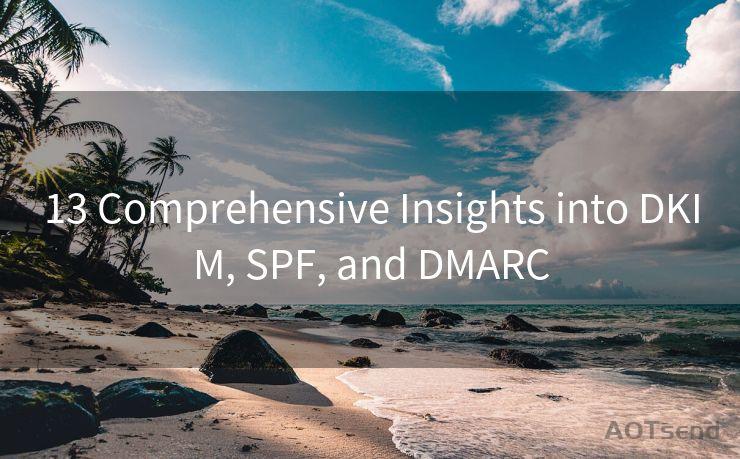13 Comprehensive Insights into DKIM, SPF, and DMARC




1. Introduction to Email Authentication Protocols
In the digital world, email communication remains a cornerstone of business and personal interactions. However, with the rise of cyber threats, ensuring the authenticity and security of emails has become paramount. This article delves into three crucial email authentication protocols: DKIM, SPF, and DMARC, providing thirteen comprehensive insights into these technologies.
2. DKIM (DomainKeys Identified Mail)
DKIM, or DomainKeys Identified Mail, is a method to validate the authenticity and integrity of an email message. It works by adding a digital signature to the email header, which can be verified by the receiving server.
Insight 1: DKIM ensures that the email content hasn't been tampered with during transit, enhancing security.
Insight 2: Implementing DKIM can significantly reduce the chances of your emails being marked as spam, improving email deliverability.
3. SPF (Sender Policy Framework)
SPF, or Sender Policy Framework, is an email validation system designed to prevent email spoofing. It allows domain owners to specify which IP addresses are authorized to send emails from their domain.
Insight 3: By defining an SPF record, domain owners can protect their domains from being used in email spoofing attacks.
Insight 4: SPF helps receiving servers identify and filter out forged emails, reducing the risk of phishing and other email-based scams.
4. DMARC (Domain-based Message Authentication, Reporting, and Conformance)
DMARC is a protocol that builds upon DKIM and SPF, providing a framework for email senders and receivers to improve the handling of unauthenticated emails.
Insight 5: DMARC enables domain owners to specify how receiving servers should handle unauthenticated emails, such as quarantining or rejecting them.
Insight 6: With DMARC, organizations can receive reports on the authentication status of their outgoing emails, helping them identify and address any potential issues.
5. The Importance of Implementing These Protocols
🔔🔔🔔
【AOTsend Email API】:AOTsend is a Managed Email Service for sending transactional emails. Support Email Types: reminders, authentication, confirmations, notifications, verification codes, invoices, password resets, account activations, billing statements, two-factor authentication (2FA), and one-time passwords (OTP) emails, etc. $0.28 per 1000 Emails. 99% Delivery, 98% Inbox Rate.
You might be interested in:
Why did we start the AOTsend project, Brand Story?
What is a Managed Email API, How it Works?
Best 25+ Email Marketing Platforms (Authority,Keywords&Traffic Comparison)
Best 24+ Email Marketing Service (Price, Pros&Cons Comparison)
Email APIs vs SMTP: How they Works, Any Difference?

In today's landscape of increasing cyber threats, implementing DKIM, SPF, and DMARC is crucial for organizations.
Insight 7: These protocols not only protect your domain's reputation but also enhance customer trust in your emails.
Insight 8: By reducing the chances of your emails being marked as spam, these protocols can improve your email marketing and communication efforts.
6. Conclusion
DKIM, SPF, and DMARC are powerful tools in the fight against email fraud and spoofing.
Insight 9: Implementing these protocols is a proactive step towards securing your organization's email communications.
Insight 10: As cyber threats evolve, staying updated on the latest email authentication technologies is essential for maintaining a secure digital presence.
In summary, DKIM, SPF, and DMARC provide a robust framework for enhancing email security and authenticity. By leveraging these protocols, organizations can protect their domains, improve email deliverability, and build trust with their customers.
Insight 11: Understanding and implementing these technologies is key to staying ahead in the ever-changing landscape of cybersecurity.
Insight 12: With DKIM, SPF, and DMARC, businesses can ensure that their emails are trusted, secure, and effectively delivered.
Insight 13: Investing in email authentication is a crucial step towards safeguarding your organization's digital communications and maintaining a positive reputation in the eyes of your customers and partners.




Scan the QR code to access on your mobile device.
Copyright notice: This article is published by AotSend. Reproduction requires attribution.
Article Link:https://www.mailwot.com/p1444.html



